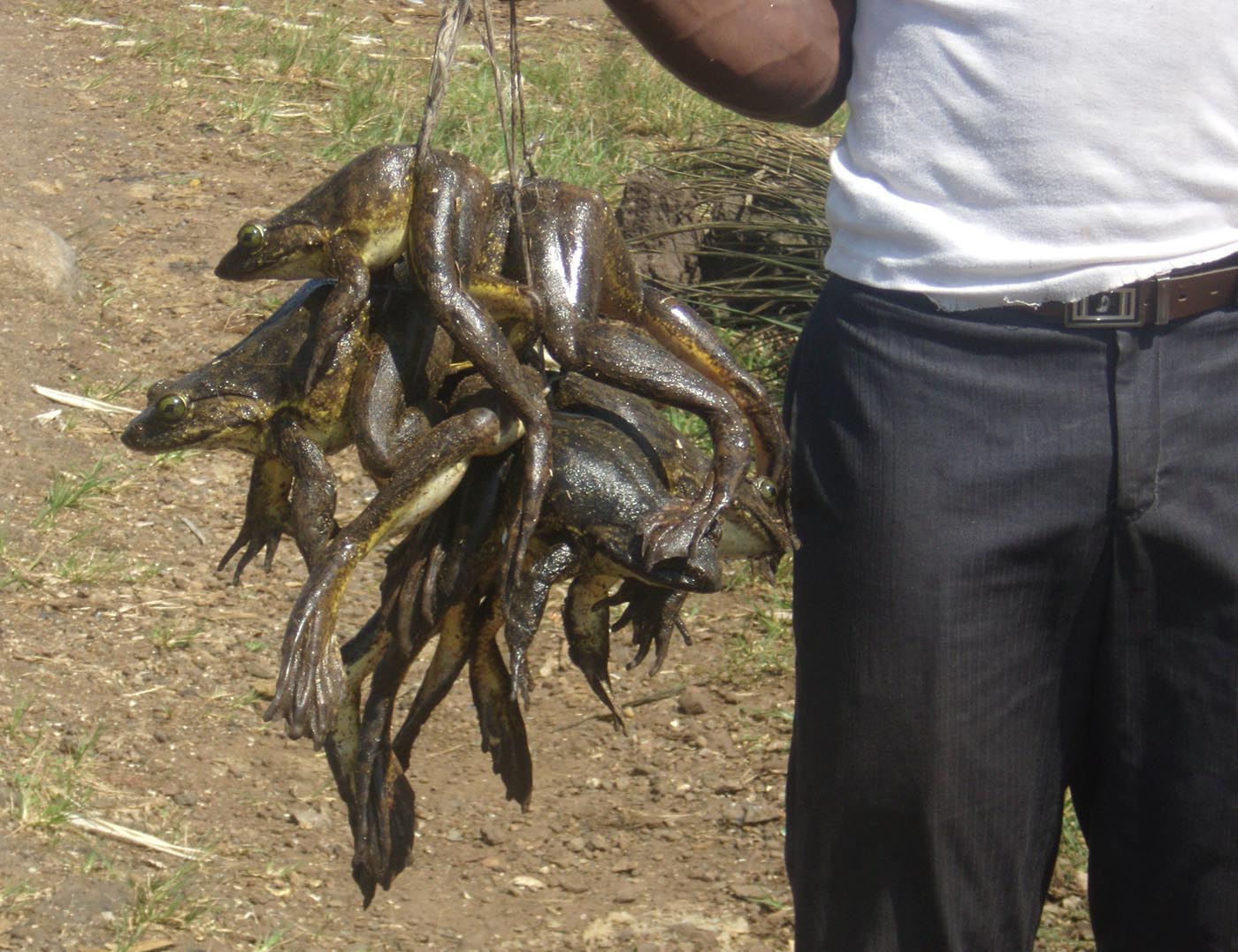Funding Available For Goliath Frog Conservation Projects
A generous SAVE THE FROGS! Member has offered to fund a SAVE THE FROGS! grant between $1,300 and $2,500 to support conservation efforts focused specifically on Goliath Frogs (Conraua goliath). Acceptable projects include education, documentaries, research, habitat restoration, or any other actions that are likely to yield positive benefits for the Goliath Frogs.
Goliath Frogs are the largest frogs in the world, weighing up to 7.2 lbs (3.3 kg) and measuring up to 12.5 in (32 cm). Species distribution is limited to Cameroon and Equatorial Guinea in Central Africa. Goliath frogs are currently classified by the IUCN as Endangered, primarily due to limited geographical distribution, habitat destruction, and collection of the frogs for food.
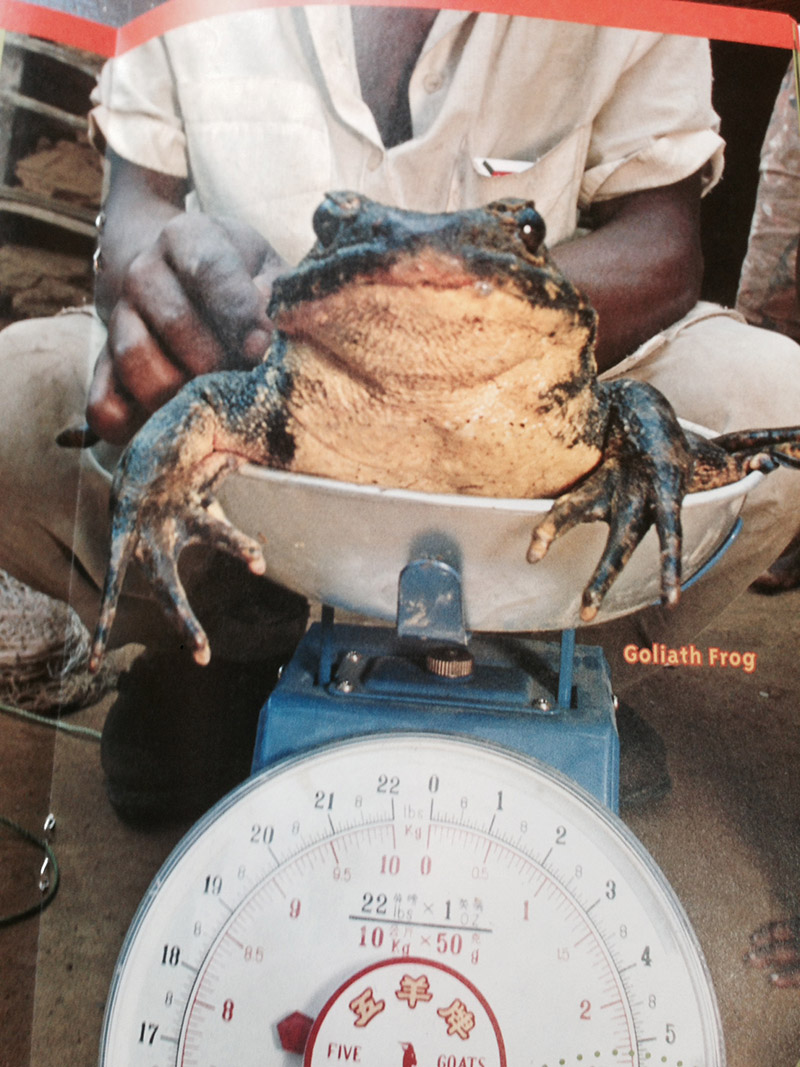
Goliath Frogs weigh in as the heaviest frogs on the planet!
Goliath Frog Natural History, Life Cycle And Threats
Goliath frogs live in lowland forests and are frequently found near rapids or cascading rivers. Surrounding forests are hot, dense, and humid with large canopies overhanging the river. Although nocturnal, during the day adults can often be found basking on rocks near rivers, allowing for an easy escape into the water. Some individuals have been observed skittering atop the water’s surface with several powerful, consecutive leaps (Herrmann and Edwards 2006). Despite their aquatic agility, they are far slower on land and are easily captured, their large size attracting local hunters to the frogs’ river hideaways.
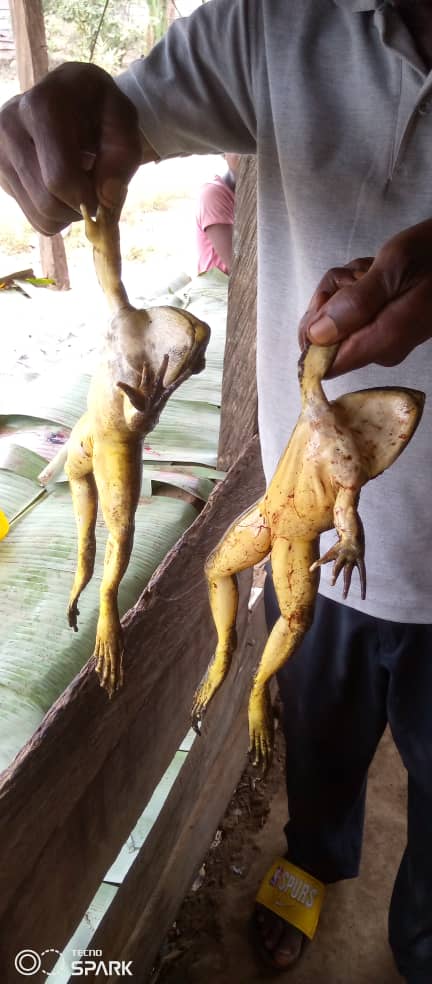
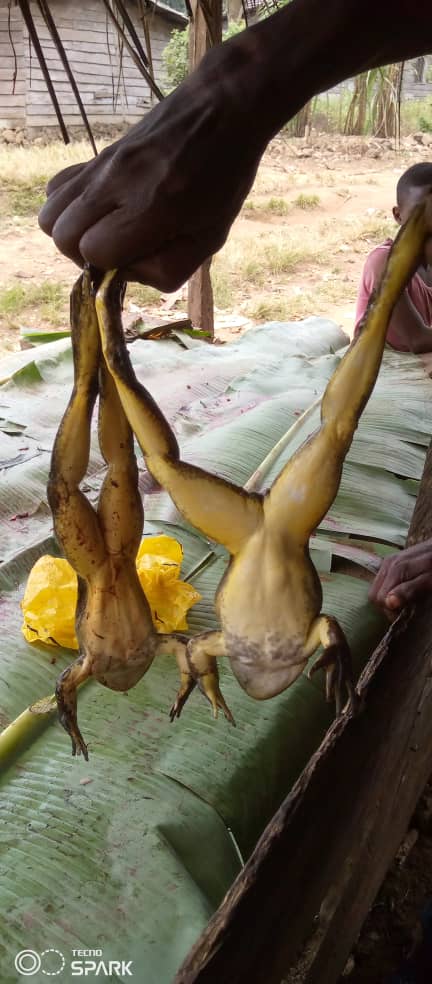
Goliath frogs killed by frog hunters. Photo courtesy Nchang Chrysanthus
Goliath frogs reproduce twice a year during the dry seasons in mid-summer and mid-winter. The frogs nest in small pools or by digging depressions in the riverbank and deposit upwards of 350 eggs in a single clutch. The eggs are laid underwater, often attached to plants or rocks to provide support while the eggs develop and prepare to hatch. Over the next three months, the tadpoles will mature and begin metamorphosis. As with many frog species, the Goliath Frog tadpoles are primarily herbivorous, eating aquatic plants and leaves, and they may completely develop within their nest. Once they become adults, they transition to a carnivorous diet that includes insects, shrimp, and arachnids.
Goliath Frogs can live up to 15 years in the wild, but their numbers are rapidly dwindling. Their main threats are local hunters. Intervention is needed, in cooperation with local communities, to reduce hunting to sustainable levels. We hope to raise awareness of our biggest froggy friends, the Goliath Frogs, by presenting this grant opportunity.
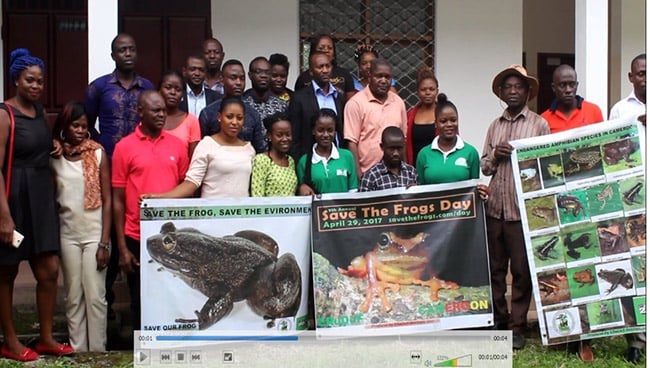
Save The Frogs Day 2017 in Cameroon with the Environment and Rural Development Foundation (ERuDeF)
How To Apply For A Goliath Frog Grant
To apply for a Goliath Frog Grant, head over to the SAVE THE FROGS! Grants Homepage, and apply through either the Amphibian Conservation Award or the Save The Frogs Day Grant application (whichever is most relevant to your project). We look forward to hearing from you and learning about your innovative approaches for helping the Goliath Frogs!
Note that this announcement relates to the 2022 grants round. While we hope to offer these grants in future years, if you are reading this after March 2022, you should be sure to contact us to determine whether the grants are still being offered.

Best of luck with your grant application!
How To Support Our Work
You can support our amphibian conservation efforts in Africa and beyond by volunteering, donating, or becoming a member.
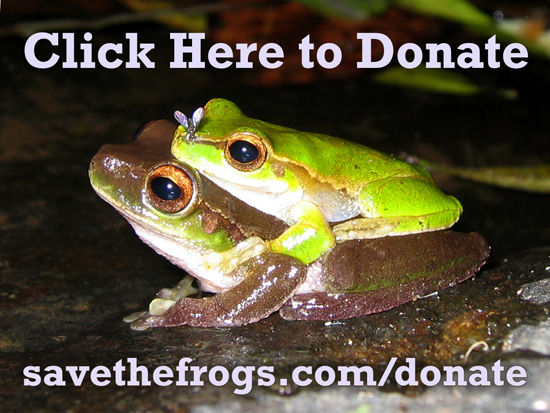
Your financial support makes grants like these possible!


